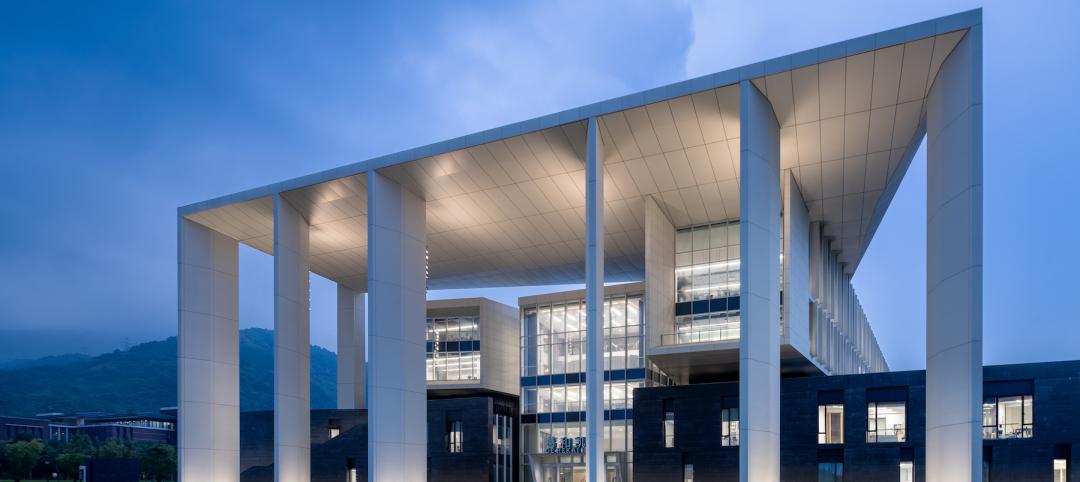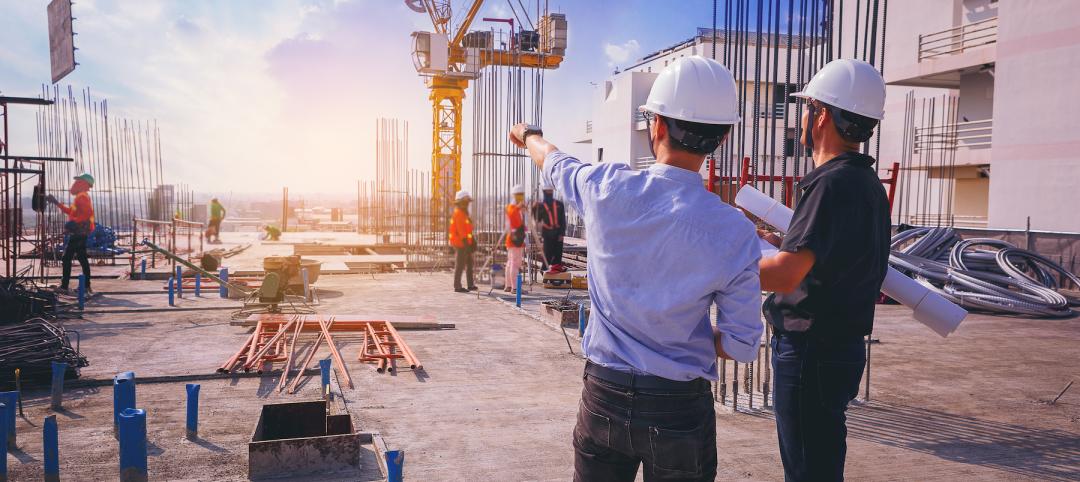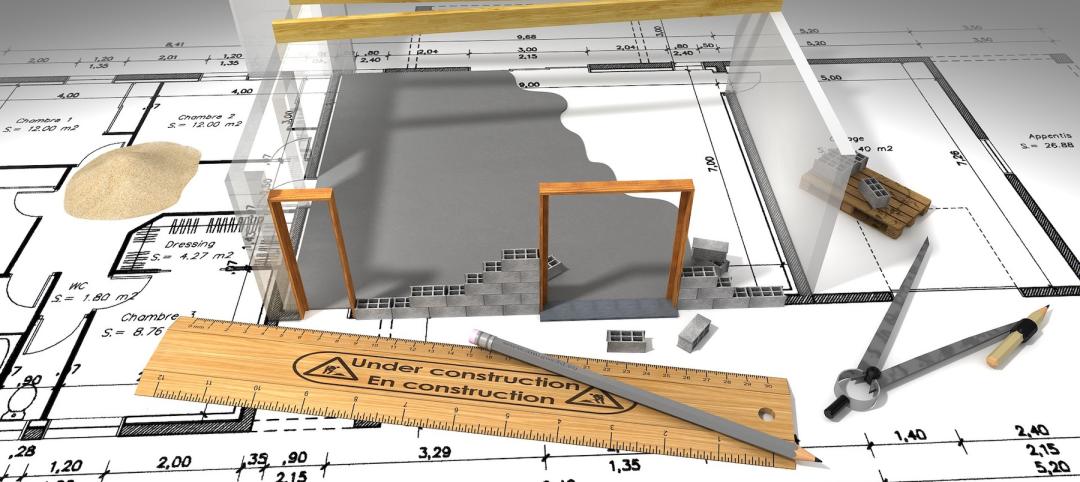According to the Occupational Safety and Health Administration (OSHA), falls are the leading cause of private sector worker fatalities in the construction industry. Everyone who works at heights, whether it's on a roof, scaffolding, or the edge of a tall building, should have properly fitting safety harnesses, yet not all contractors have the supply they need to better protect women in construction. To help address this, Autodesk is funding a grant program with one of the largest construction trade organizations – the Associated General Contractors of America (AGC) – to supply select, in-need member contractors with fall protection harnesses sized for women who work at heights.
The program comes at a time when 80 percent of construction firms report having a hard time filling the hourly craft positions that represent the bulk of the construction workforce. Women represent approximately 10 percent of the overall construction labor force1, with even lower representation in trades positions, and one of the largest demographics with the potential to fill the gap in labor. To help attract and retain more women in the field, jobsites need to recognize and meet the needs of a gender-diverse workforce, including properly sized and comfortable PPE.
"The construction industry agrees safety must be everyone's priority, but we also need to recognize when safety needs aren't being met for some workers. Technology is improving jobsite safety, but it's not a silver bullet," said Allison Scott, director, Autodesk Construction Solutions. "Construction is – and will continue to be – a people-driven business. The industry needs more people, and women must feel safe and welcome on jobsites if we want them to choose a career in construction. Ultimately, when we address safety for women, we improve safety for everyone."
See Also: Skanska designs personal protective equipment tailor-made for the female workforce
Ill-fitting PPE can range from uncomfortable to downright dangerous. For example, a fall protection harness that's too loose may still catch a woman when the scaffolding beneath her collapses, but it could seriously injure her neck or shoulder in the process. This not only affects the injured worker, but her employer as well. The contractor incurs lost time, productivity and – potentially – a costly worker's compensation claim.
"One of the most effective ways to successfully recruit more women into high-paying construction careers is to make sure firms are able to provide safety equipment that makes them even safer," said Stephen E. Sandherr, the chief executive officer of the Associated General Contractors of America. "We want to leverage these grants to encourage our member firms to provide a wider range of safety equipment and continue to expand the diversity of our workforce."
A top concern of contractors is the safety of their employees, and many are recognizing the shifting landscape in the construction workforce and taking steps toward a more inclusive, injury-free job site. Earlier this year, Skanska created gloves and two customized safety vests designed for women and based on feedback from its own female employees. The company plans to expand the apparel line soon to include surveyor vests and high-visibility jackets for winter.
The grant program will fund the purchase of approximately 300 fall protection harnesses sized for women. AGC members can apply for the grants until the application window closes on January 10, 2020. Winners will be notified in advance and honored at the AGC's annual convention, to be held March 9-12, 2020 in Las Vegas, NV.
Related Stories
Building Team | Jul 6, 2022
Buro Happold selects Jennifer Price for top role, US Managing Director
Buro Happold, a world-class practice of 2,200 engineers and consultants, has announced the appointment of Seattle-based Jennifer Price as US Managing Director and Partner.
University Buildings | Jul 6, 2022
Wenzhou-Kean University opens a campus building that bridges China’s past and future
After pandemic-related stops and starts, Wenzhou-Kean University’s Ge Hekai Hall has finally begun to see full occupancy.
Security and Life Safety | Jul 5, 2022
What AEC firms should look for in a cybersecurity partner
When looking for expert partners in cybersecurity, AEC firms will find quite a lot of companies claiming to be at the forefront of modern threats. Here are five key points to look for when choosing a cybersecurity firm.
Performing Arts Centers | Jul 5, 2022
Tour the new Patricia Reser Center for the Arts in Oregon
This month, the community of Beaverton, Oregon, welcomed a new haven for artistic expression with the opening of Patricia Reser Center for the Arts (The Reser).
Building Team | Jul 5, 2022
Dallas’ Fair Park, home to the State Fair of Texas, will place a park atop a new parking garage
A registered National Historic Landmark, Fair Park is the 227-acre home to the Texas State Fair and various cultural institutions in Dallas, Tex.
Market Data | Jul 1, 2022
Nonresidential construction spending slightly dips in May, says ABC
National nonresidential construction spending was down by 0.6% in May, according to an Associated Builders and Contractors analysis of data published today by the U.S. Census Bureau.
Building Team | Jul 1, 2022
How to apply WELL for better design outcomes
The International WELL Building Institute (IWBI) cites attracting top talent, increasing productivity, and improving environmental, social or governance (ESG) performance as key outcomes of leveraging tools like their WELL Building Standard to develop healthier environments.
Building Team | Jul 1, 2022
Less portable potty, more movable restroom
Some contractors are packing up their portable potties and instead using the H3 Wellness Hub.
Building Team | Jun 30, 2022
Adopting a regenerative design mindset
To help address the current climate emergency, a new way of thinking across the entire architecture, engineering and construction industry is imperative.
Market Data | Jun 30, 2022
Yardi Matrix releases new national rent growth forecast
Rents in most American cities continue to rise slightly each month, but are not duplicating the rapid escalation rates exhibited in 2021.

















